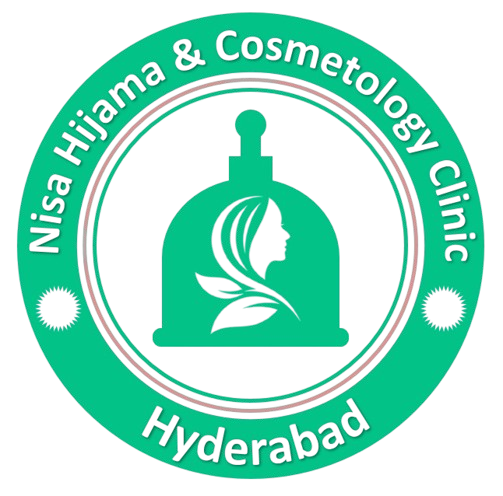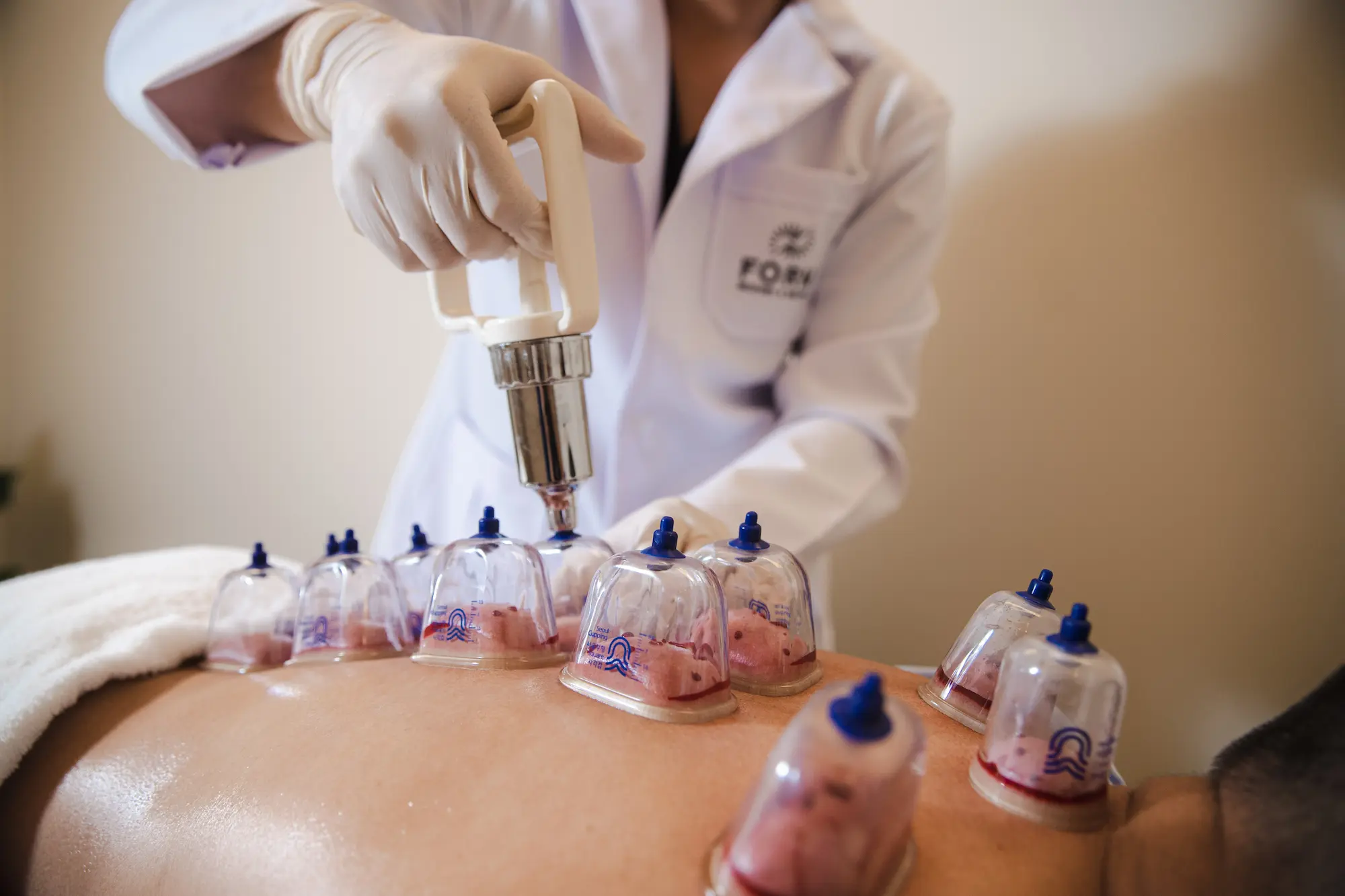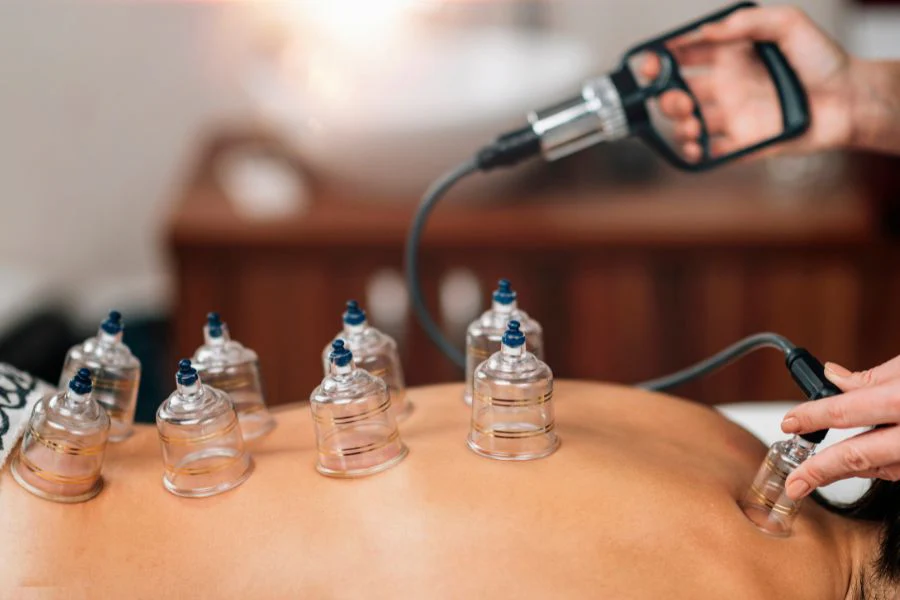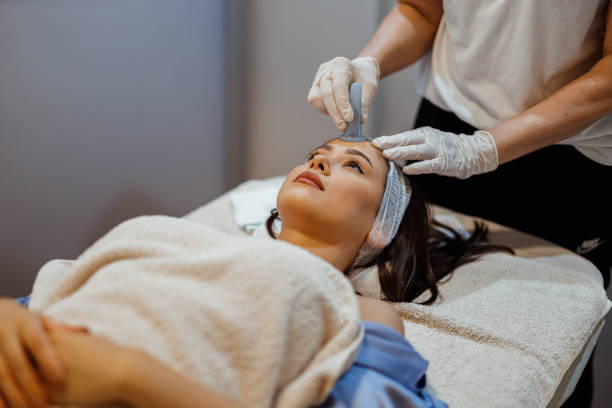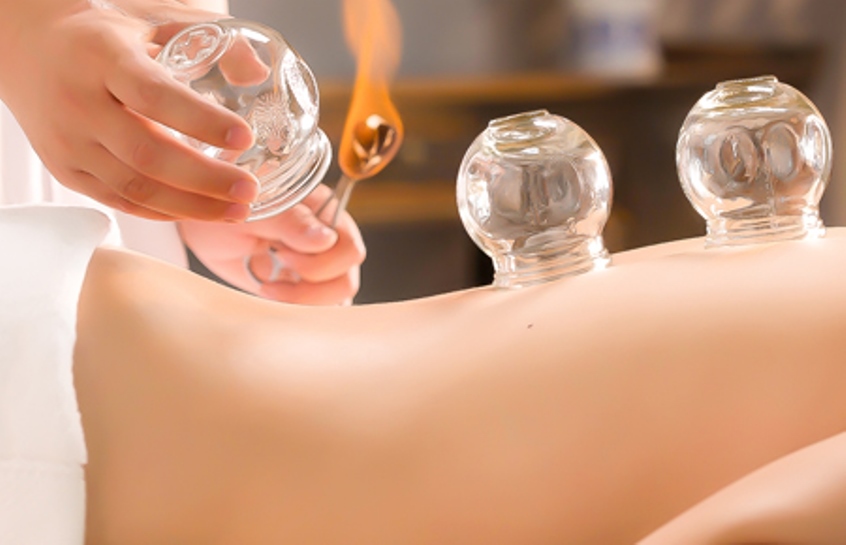What is Hijama Cupping Therapy and Its Health Benefits? Hijama cupping therapy, an ancient practice with roots in traditional Chinese, Egyptian, and Middle Eastern cultures, has been utilized for thousands of years to promote health and well-being. This therapeutic technique involves placing cups on the skin to create suction, which is believed to enhance blood flow, remove toxins, and facilitate healing. There are several types of cupping, each with its unique method and benefits. Dry cupping, the most common form, involves creating a vacuum within the cup, which is then placed on the skin to draw blood to the surface. Wet cupping, also known as Hijama, involves making small incisions on the skin before applying the cups to draw out a small amount of blood. This method is particularly noted for its detoxification benefits. Fire cupping, a less common technique, uses heat to create suction within the cup. Each method is performed by trained practitioners to ensure safety and effectiveness. The health benefits of Hijama cupping therapy are extensive. It is renowned for improving blood circulation, which can aid in faster recovery and promote overall health. Detoxification is another significant benefit, as the suction helps remove impurities and stagnant blood from the body. Many individuals seek Hijama therapy for pain relief, particularly for chronic conditions such as migraines, arthritis, and lower back pain. Enhanced overall well-being is often reported by those who regularly undergo Hijama therapy. Patients have experienced relief from stress, anxiety, and fatigue, attributing their improved physical and mental health to this ancient practice. Specific conditions that benefit from Hijama include chronic pain, migraines, arthritis, and digestive disorders, among others. Real-life testimonials underscore the effectiveness of Hijama therapy. For instance, one patient suffering from chronic migraines reported a significant reduction in the frequency and intensity of their headaches after several sessions of wet cupping. Another case study involved an individual with severe arthritis finding substantial pain relief and improved mobility through regular Hijama treatments. These personal stories add a layer of credibility and highlight the potential of Hijama cupping therapy in modern healthcare. The Role of Cosmetology in a Hijama Cupping Therapy Center Integrating cosmetology services within a Hijama cupping therapy center offers a comprehensive approach to health and beauty, addressing both physical wellness and aesthetic needs. Cosmetology treatments available in these centers often include a wide range of services such as facials, skin care therapies, and other non-invasive beauty procedures. These treatments are designed not only to enhance physical appearance but also to improve overall skin health. Facials, for instance, are a popular cosmetology service that can be tailored to address specific skin concerns like acne, dryness, or aging. Using natural and safe products is paramount in these treatments, ensuring that clients receive the utmost care without compromising their skin’s integrity. Natural ingredients are often preferred for their gentle yet effective properties, promoting a healthier complexion and minimizing the risk of adverse reactions. Skin care therapies in a Hijama cupping therapy center may also include advanced techniques such as microdermabrasion, chemical peels, and LED light therapy. These non-invasive procedures are designed to rejuvenate the skin, reduce signs of aging, and treat various skin conditions. By incorporating these cosmetology services, clients can experience a holistic approach to beauty that complements the therapeutic benefits of Hijama. The synergy between Hijama and cosmetology can significantly enhance the overall client experience. While Hijama cupping therapy focuses on detoxifying the body and improving circulation, cosmetology treatments can address external beauty concerns, creating a balanced and harmonious approach to health and wellness. This combination allows clients to achieve both physical well-being and aesthetic satisfaction in one convenient location. Expert insights from cosmetologists working in these centers further highlight the advanced techniques and skills employed to deliver exceptional results. Their expertise ensures that clients receive personalized care tailored to their unique needs, enhancing the efficacy of the treatments. By offering a one-stop solution for health and beauty, Hijama cupping therapy centers with integrated cosmetology services provide a truly holistic experience for their clients.
Exploring the Benefits of Hijama Cupping Therapy and Cosmetology Services at Our Professional Center
Understanding Hijama Cupping Therapy: History, Benefits, and Process Hijama cupping therapy, a practice with roots deeply embedded in ancient medical traditions, has been utilized for centuries to enhance health and wellness. The origins of Hijama can be traced back to early civilizations, including those of Egypt, China, and the Middle East. Ancient texts and medical scriptures highlight its significance in treating various ailments and maintaining overall well-being. Over time, Hijama has evolved, incorporating insights from different cultures and medical paradigms, yet its core principles remain unchanged. The health benefits of Hijama cupping therapy are manifold. One of the primary advantages is detoxification. By drawing out toxins from the body, Hijama helps in purifying the blood, which can lead to improved organ function and overall vitality. Additionally, Hijama is renowned for its efficacy in pain relief. It is particularly beneficial for individuals suffering from chronic conditions such as arthritis, migraines, and muscle tension. Another significant benefit is the enhancement of blood circulation. The suction created during a Hijama session stimulates blood flow to the affected areas, promoting faster healing and reducing inflammation. The process of Hijama cupping therapy is both methodical and meticulous. It begins with a thorough consultation to assess the individual’s health status and identify specific areas requiring attention. The skin is then sterilized, and small incisions are made at the targeted sites. Cups are placed over these incisions, and a vacuum is created, either manually or with a pump. This suction draws out stagnant blood and toxins. The duration of the cupping process varies but typically lasts between 5 to 20 minutes. After the cups are removed, the skin is cleansed, and a healing ointment is applied to aid in recovery. Post-session, it’s advised to stay hydrated and avoid strenuous activities to allow the body to recuperate fully. At our professional center, we ensure that every Hijama session is conducted with the utmost care, adhering to high standards of hygiene and personalized attention, thereby providing a safe and effective therapeutic experience for our clients. Cosmetology Clinic Services: Enhancing Beauty and Wellness At our professional center, we take pride in offering a comprehensive range of cosmetology services designed to enhance both beauty and overall wellness. Our clinic provides an array of treatments tailored to meet the unique needs of each client, ensuring personalized care and optimal results. Among the services available, facials, skin rejuvenation, and anti-aging therapies stand out as some of the most sought-after treatments. Facials are a cornerstone of our cosmetology offerings, providing deep cleansing, exfoliation, and hydration to promote healthy, glowing skin. Our skilled cosmetologists customize each facial to address specific skin concerns, whether it be acne, dryness, or sensitivity, ensuring that every client leaves with a refreshed and radiant complexion. Skin rejuvenation treatments at our clinic utilize advanced technology to revitalize and restore the skin’s natural beauty. Techniques such as microdermabrasion, chemical peels, and laser therapy are employed to reduce the appearance of fine lines, wrinkles, and hyperpigmentation. These treatments not only improve skin texture and tone but also stimulate collagen production for long-lasting results. For those seeking to combat the signs of aging, our anti-aging therapies offer effective solutions. We provide a variety of treatments, including Botox, dermal fillers, and radiofrequency skin tightening, aimed at reducing wrinkles and restoring youthful contours. Our expert cosmetologists ensure that each procedure is performed with precision and care, delivering natural-looking results that enhance our clients’ overall appearance. What sets our clinic apart is the integration of cutting-edge technology and high-quality products into our services. We continuously invest in the latest advancements in cosmetology to offer our clients the best possible care. Our commitment to using premium, scientifically-backed products ensures that every treatment is both safe and effective. In summary, our cosmetology clinic services are designed to cater to the diverse beauty and wellness needs of our clients. By combining advanced technology, high-quality products, and personalized care, we strive to deliver exceptional results that enhance both the inner and outer beauty of those we serve.
The Synergy of Hijama Cupping Therapy and Modern Cosmetology: A Comprehensive Overview
Understanding Hijama Cupping Therapy: Origins, Benefits, and Practices Hijama cupping therapy, a practice with deep historical roots, holds a significant place in traditional medicine, especially within Middle Eastern and Asian cultures. Originating over 5,000 years ago, this therapeutic technique was documented in ancient Egyptian texts and practiced by various civilizations, including the Chinese and Greeks. Hijama, derived from the Arabic word ‘hajm’, meaning ‘sucking’, involves the application of suction cups to the skin to draw out impurities and stimulate healing. The methodology of Hijama cupping therapy can be divided into two primary types: dry and wet cupping. Dry cupping involves creating a vacuum within glass or silicone cups placed on the skin, leading to increased blood flow to the targeted area. This process is beneficial for enhancing circulation and relieving muscle tension. Wet cupping, on the other hand, involves making small incisions on the skin before applying the suction cups. This allows for the extraction of a small amount of blood, which is believed to help remove toxins and promote overall health. The health benefits of Hijama are numerous and well-documented. Practitioners and patients alike report significant improvements in various conditions, such as chronic pain, migraines, and digestive disorders. The therapy is also praised for its detoxification properties, as it helps eliminate waste products from the body. Improved blood circulation, pain relief, and enhanced immune function are other notable advantages. Additionally, Hijama is said to aid in mental well-being, reducing symptoms of anxiety and stress. In contemporary settings, Hijama cupping therapy has evolved with the integration of modern techniques and safety protocols. Professional Hijama centers adhere to stringent hygiene standards, utilizing sterilized equipment to prevent infections. Practitioners are often required to have specialized training and certifications to ensure they are well-versed in both traditional methods and modern medical guidelines. This professionalization of Hijama ensures that patients receive safe and effective treatment, blending ancient wisdom with contemporary medical practices. Integrating Cosmetology and Hijama: Enhancing Beauty and Wellness As the pursuit of beauty and wellness evolves, innovative approaches are emerging that blend traditional practices with modern cosmetology. Hijama cupping therapy, a time-honored method of healing, has found its place within contemporary cosmetic treatments, offering a unique synergy that enhances both aesthetic and health outcomes. By incorporating Hijama into cosmetology, practitioners can provide a holistic approach to skincare and overall well-being. One of the most notable integrations is facial cupping, a technique that utilizes small, specialized cups to stimulate blood flow and promote skin rejuvenation. This method, rooted in the principles of Hijama, can significantly improve the appearance of fine lines, wrinkles, and sagging skin. The gentle suction created by the cups encourages increased circulation, delivering essential nutrients and oxygen to the skin’s surface. As a result, clients often experience a more youthful and radiant complexion. In addition to its anti-aging benefits, Hijama cupping therapy has shown promise in addressing common skin issues such as acne, scars, and pigmentation. The detoxifying properties of Hijama can help to clear congested pores, reduce inflammation, and diminish the appearance of scars. By integrating this traditional therapy with contemporary skincare routines, cosmetologists can offer clients a comprehensive treatment plan that targets both the root causes and visible symptoms of these conditions. Real-life case studies and testimonials underscore the effectiveness of combining Hijama with cosmetology treatments. Clients often report noticeable improvements in their skin’s texture, clarity, and overall health. For instance, one testimonial highlighted a client’s journey from chronic acne to clear skin after a series of Hijama sessions, coupled with modern skincare treatments. Such success stories demonstrate the powerful synergy between these two practices. During a session that combines Hijama and cosmetology, clients can expect a thorough consultation to tailor the treatment to their specific needs. Modern clinics offering these services adopt a holistic approach, ensuring that both the aesthetic and therapeutic aspects are addressed. This integration not only enhances the efficacy of cosmetic treatments but also promotes a sense of well-being and balance. The fusion of Hijama cupping therapy with modern cosmetology represents a forward-thinking approach to beauty and wellness. By leveraging the strengths of both practices, clients can achieve remarkable results that transcend the superficial, fostering a deeper sense of health and vitality.
Exploring the Benefits of Hijama Cupping Therapy and Cosmetology Services at Our Professional Clinic
Understanding Hijama Cupping Therapy: History, Techniques, and Benefits Hijama cupping therapy is an ancient practice that has been utilized across various cultures for centuries. Originating in traditional Chinese and Middle Eastern medicine, Hijama was initially used as a method to balance the body’s energy and promote healing. Its roots can be traced back to ancient Egypt, Greece, and China, where it was believed to aid in the treatment of numerous ailments. Over time, this therapeutic technique has evolved, incorporating advancements in medical knowledge while retaining its traditional essence. There are primarily two techniques employed in Hijama cupping therapy: dry cupping and wet cupping. Dry cupping involves creating suction on specific points on the body without incisions, helping to stimulate blood flow and facilitate muscle relaxation. Wet cupping, on the other hand, includes making small incisions on the skin before applying the cups, allowing for the removal of stagnant blood and toxins from the body. Professionals utilize various types of cups, including bamboo, glass, and silicone, each chosen based on the specific needs and comfort of the patient. The benefits of Hijama cupping therapy are manifold. It is renowned for its effectiveness in pain relief, particularly for conditions such as migraines, back pain, and arthritis. Additionally, Hijama aids in detoxification, helping to eliminate harmful substances from the body and improve overall circulation. This enhanced blood flow can lead to better oxygenation of tissues and organs, promoting healing and enhancing overall well-being. Moreover, Hijama is often sought after for its role in boosting the immune system and alleviating symptoms of chronic fatigue and stress. Many individuals have experienced significant improvements in their health and quality of life through Hijama cupping therapy. For instance, Sarah, a long-time sufferer of chronic migraines, reported a dramatic reduction in the frequency and intensity of her headaches after several sessions of Hijama. Similarly, John, who struggled with severe lower back pain, found substantial relief and increased mobility following his treatment. These testimonials underscore the potential of Hijama to provide tangible health benefits, making it a valuable addition to modern therapeutic practices. The Integration of Cosmetology Services: Enhancing Beauty and Wellness At our professional clinic, we offer a comprehensive range of cosmetology services designed to enhance beauty and promote overall wellness. Our treatments include facials, skin rejuvenation, hair care, and body treatments, each tailored to meet the unique needs of our clients. Our cosmetology services are meticulously crafted to provide personalized care, ensuring optimal results through a combination of advanced technology and high-quality products. Facials at our clinic are customized to address various skin concerns, such as acne, aging, and dehydration. We use state-of-the-art equipment and products that are rich in essential nutrients to rejuvenate the skin, leaving it radiant and healthy. Similarly, our skin rejuvenation treatments employ cutting-edge techniques to reduce fine lines, wrinkles, and other signs of aging, helping clients achieve a youthful and vibrant appearance. Our hair care services encompass a wide range of treatments, from nourishing hair masks and scalp therapies to advanced hair restoration procedures. These services are designed to strengthen hair, increase volume, and improve overall hair health. Additionally, our body treatments, including exfoliation and detoxification therapies, are aimed at enhancing the skin’s texture and tone, providing a revitalizing experience. Safety and effectiveness are our top priorities, and we utilize the latest advancements in cosmetology to ensure our treatments are both safe and efficient. Our high-quality products are carefully selected for their efficacy and safety, providing our clients with the best possible results. Our team of experienced professionals is dedicated to delivering exceptional care, ensuring each client receives a tailored treatment plan that meets their specific needs. The synergy between our Hijama cupping therapy and cosmetology services offers a holistic approach to health and beauty. By combining these treatments, clients can experience enhanced physical appearance, boosted self-confidence, and an overall improved quality of life. This integrated approach not only addresses external beauty but also promotes internal wellness, creating a balanced and harmonious state of well-being.
The Intersection of Hijama Cupping Therapy and Modern Cosmetology: A Comprehensive Guide
Understanding Hijama Cupping Therapy: History, Benefits, and Practices Hijama cupping therapy, often referred to simply as cupping, is an age-old practice rooted in traditional Chinese and Middle Eastern medicine. Historical records indicate its use dating back over 2,000 years, with practitioners in ancient China and the Middle East employing cupping as a means to balance bodily energies and promote overall health. The practice has since evolved and diversified into several distinct methods, each with its unique procedural nuances and therapeutic benefits. There are primarily three types of cupping: dry cupping, wet cupping, and fire cupping. Dry cupping involves the placement of suction cups on the skin to create a vacuum, which draws blood to the surface and encourages blood flow. Wet cupping, also known as Hijama, combines the suction technique with small incisions on the skin to facilitate the removal of ‘stagnant’ blood. Fire cupping, on the other hand, uses heat to create suction by briefly placing a flame inside the cup before applying it to the skin. Each method is performed with precision and care, ensuring the comfort and safety of the patient. The health benefits of Hijama cupping therapy are manifold. Enhanced blood circulation is one of the primary advantages, as the suction process stimulates blood flow and oxygenates tissues. This can lead to improved detoxification, as toxins are more efficiently removed from the body. Additionally, many individuals experience significant pain relief from conditions such as arthritis, migraines, and muscle tension. Cupping therapy also has been shown to enhance immune function, making the body more resilient against infections and illnesses. Modern scientific studies and numerous testimonials have begun to substantiate the benefits of cupping therapy. Research indicates that cupping can positively affect various physiological processes, including reducing inflammation and promoting relaxation. As a result, more healthcare professionals are integrating Hijama cupping therapy into holistic health regimens, recognizing its potential to complement conventional medical treatments and promote overall well-being. Integrating Hijama Cupping Therapy with Modern Cosmetology: Techniques and Client Benefits The innovative fusion of Hijama cupping therapy with modern cosmetology practices is revolutionizing the beauty industry. By integrating traditional cupping techniques with contemporary aesthetic treatments, practitioners can offer holistic solutions for enhancing skin appearance and body contours. One of the primary cosmetic uses of cupping therapy is the reduction of cellulite. The suction effect of cupping stimulates blood flow and lymphatic drainage, breaking down fatty deposits and smoothing the skin. Facial cupping is another technique gaining traction in the beauty sector. This method involves using smaller cups on the face to promote skin elasticity, reduce puffiness, and improve the overall complexion. The gentle suction increases circulation, which aids in collagen production and revitalizes the facial tissues. As a non-invasive procedure, facial cupping offers clients a natural alternative to more aggressive treatments like chemical peels and Botox. Body contouring through cupping therapy is also becoming popular. The process helps to sculpt and tone the body by enhancing blood flow and facilitating the removal of toxins. This can lead to improved muscle tone and a more defined body shape. Many cosmetology clinics are now incorporating these techniques into their service menus, providing clients with comprehensive, non-surgical options for body enhancement. Case studies have shown successful integration of cupping therapy within cosmetology clinics. For instance, a clinic in New York reported a significant increase in client satisfaction and retention rates after adding cupping therapy to their facial treatment offerings. Another clinic in Los Angeles found that combining cupping with traditional massage techniques resulted in more effective cellulite reduction and a higher rate of client referrals. For practitioners, offering these combined services requires appropriate training and qualifications. It is essential to understand the principles of both cupping therapy and cosmetology to ensure safe and effective treatments. Many professional organizations now provide specialized training programs that cover the integration of these practices. From a business perspective, the inclusion of cupping therapy can set a cosmetology clinic apart in a competitive market. Clients increasingly seek natural and holistic beauty treatments, and cupping therapy aligns perfectly with this trend. By offering a diverse range of services that cater to this demand, clinics can attract a broader clientele and enhance their reputation for innovative, effective treatments.
The Synergy of Hijama Cupping Therapy and Modern Cosmetology: A Comprehensive Guide
Understanding Hijama Cupping Therapy: History, Benefits, and Techniques Hijama cupping therapy, an ancient practice rooted in traditional Islamic medicine, has a rich history dating back centuries. Its origins can be traced to various cultures, but it is most prominently associated with Islamic tradition, where it is often referred to as the “medicine of the Prophet.” Historical texts and records indicate that Hijama was widely practiced in the Middle East, Asia, and parts of Europe, revered for its therapeutic benefits and holistic approach to health. Over the years, Hijama cupping therapy has been utilized to treat a wide range of ailments. Traditionally, it was believed to balance the body’s energy, remove toxins, and promote overall well-being. This ancient practice has seen a modern resurgence, with increasing interest from both practitioners and patients worldwide. Anecdotal evidence, alongside contemporary scientific research, supports its efficacy in addressing various health concerns, including pain relief, detoxification, and improved blood circulation. Hijama involves several techniques, each with unique applications and benefits. The most common methods include dry cupping, wet cupping, and fire cupping. In dry cupping, cups are placed on the skin to create suction, drawing blood to the surface and facilitating healing. Wet cupping, or Hijama in its traditional form, involves making small incisions on the skin before applying the cups, allowing for the removal of stagnant blood and toxins. Fire cupping, an ancient technique, utilizes the heat from a flame to create suction within the cups, enhancing the therapeutic effects. The process of Hijama cupping therapy begins with thorough preparation. The skin is cleaned and disinfected to prevent infection. During the procedure, the practitioner applies the cups to specific points on the body, creating a vacuum that draws the skin and superficial muscles into the cup. In wet cupping, small incisions are made prior to applying the cups. After a few minutes, the cups are removed, and the area is cleaned again. Proper aftercare, including rest and hydration, is crucial to maximize the benefits and promote healing. Hijama cupping therapy offers numerous therapeutic benefits. It is widely recognized for its ability to detoxify the body, relieve pain, and enhance blood circulation. Many patients report improved overall well-being, reduced inflammation, and increased energy levels following treatment. As interest in alternative and complementary therapies grows, Hijama continues to gain recognition for its holistic approach to health and its potential to support modern medical practices. Integrating Hijama with Cosmetology: Enhancing Beauty and Wellness The seamless integration of Hijama cupping therapy within modern cosmetology clinics has paved the way for innovative and holistic beauty treatments. By combining the ancient practice of Hijama with contemporary cosmetic techniques, practitioners can offer clients a comprehensive approach to beauty and wellness. This integration leverages the unique benefits of Hijama, known for its detoxifying and rejuvenating properties, to enhance traditional cosmetology treatments. Hijama cupping therapy can address a variety of cosmetic concerns effectively. For instance, individuals struggling with acne may find relief as Hijama helps to clear toxins from the skin, reducing inflammation and promoting healing. Skin rejuvenation is another area where Hijama excels; the increased blood circulation and removal of stagnant blood can lead to a more radiant and youthful complexion. Additionally, the anti-aging benefits of Hijama are noteworthy. The therapy stimulates collagen production and improves skin elasticity, helping to minimize the appearance of fine lines and wrinkles. The principles of Hijama align well with holistic beauty approaches, which emphasize the importance of internal health for external beauty. By focusing on detoxification and improving blood flow, Hijama supports the body’s natural healing processes, promoting overall well-being. This holistic approach ensures that beauty treatments are not just skin-deep but also contribute to the client’s overall health. Numerous case studies and testimonials highlight the positive outcomes of combining Hijama with cosmetology. Clients have reported significant improvements in their skin conditions and overall appearance after undergoing integrative treatments. For example, one client suffering from chronic acne experienced a notable reduction in breakouts and improved skin texture after a series of Hijama sessions combined with traditional facials. For practitioners, effectively combining Hijama with cosmetology requires specialized training and expertise. Understanding the principles of both fields and how they can complement each other is crucial. Practitioners must be skilled in the techniques of Hijama and knowledgeable about its contraindications to ensure safe and effective treatments. Continuous education and certification in both Hijama therapy and cosmetology are essential to provide clients with the highest standard of care.
